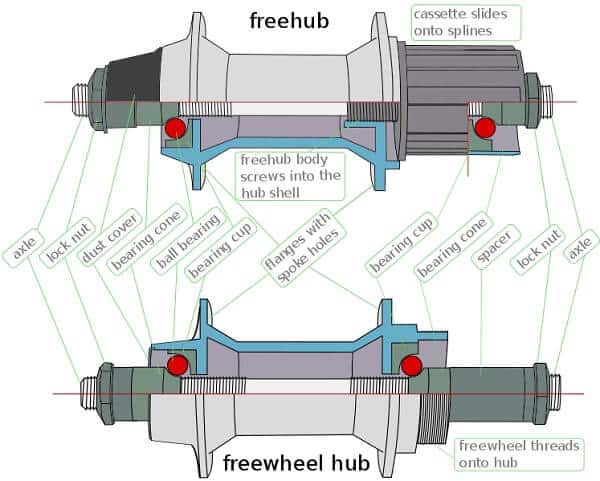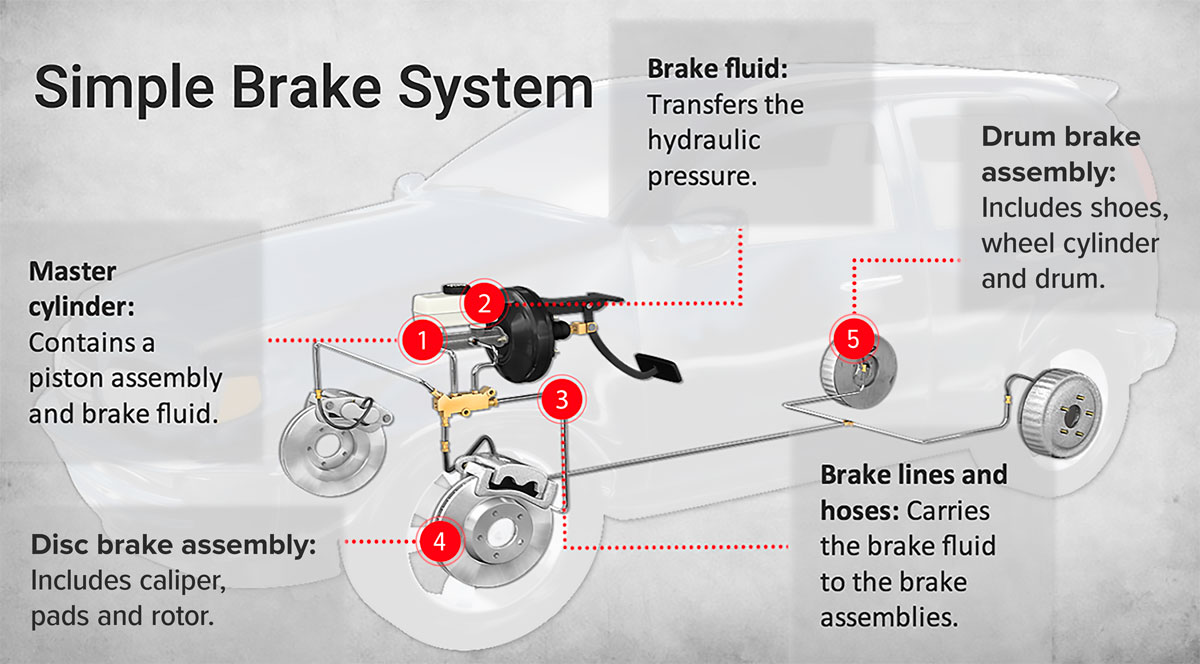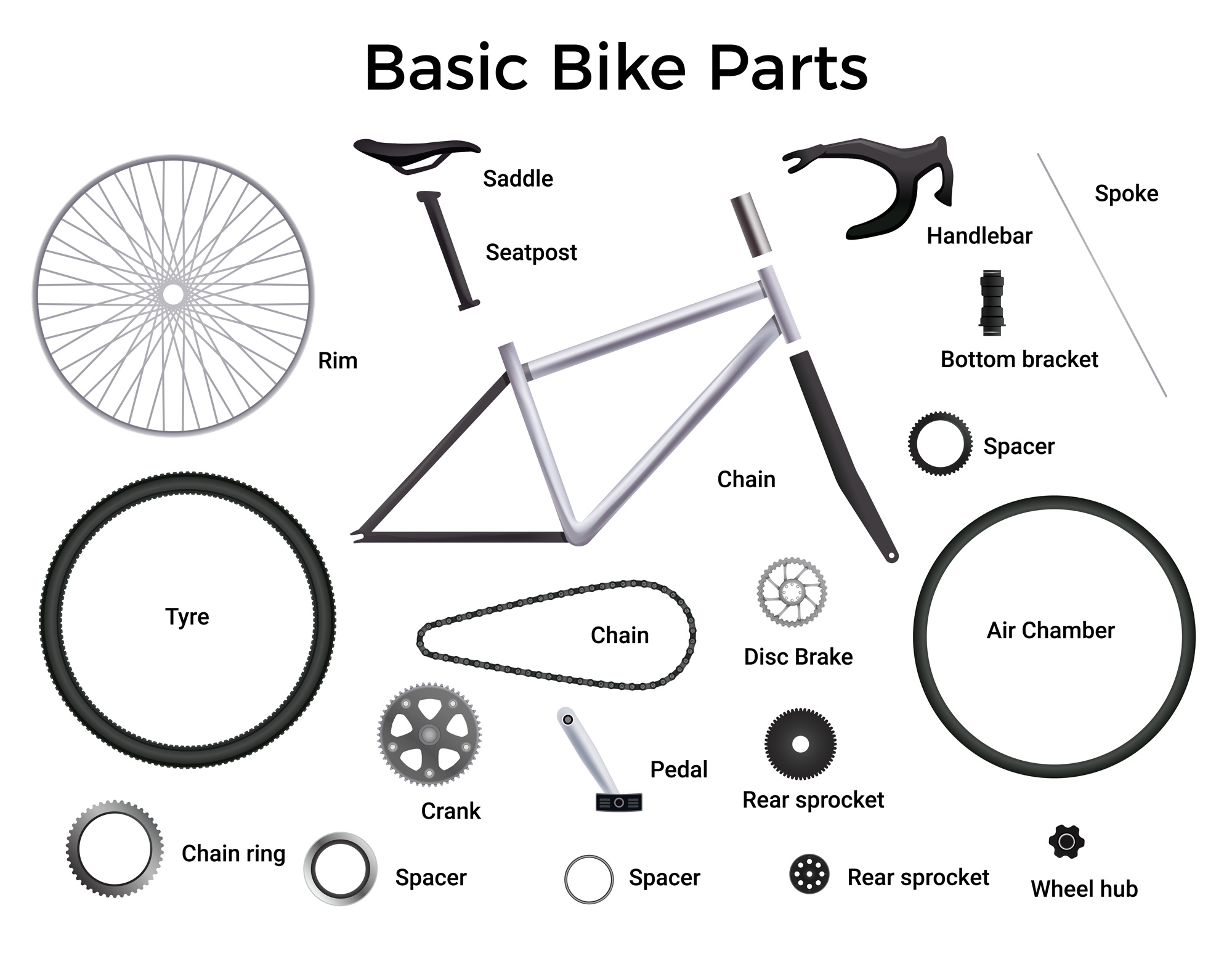Understanding the Anatomy of a Mountain Bike
Mountain biking is a complex activity that requires a deep understanding of the various components that make up a bike. From the drivetrain to the suspension system, each part plays a critical role in ensuring a safe and enjoyable ride. Having a comprehensive knowledge of mountain bike parts can improve maintenance, enhance performance, and even prevent costly repairs. A mountain bike parts diagram can be a valuable resource for riders of all levels, providing a visual representation of the complex systems that power a bike. The main components of a mountain bike include the drivetrain, brakes, suspension, wheels, and tires, as well as other essential parts like handlebars, stems, and seatposts. By understanding how these components work together, riders can optimize their bike’s performance and tackle even the most challenging trails with confidence.
How to Identify and Inspect Critical Components
Regular inspections are crucial to ensuring the safety and performance of a mountain bike. By identifying and inspecting critical components, riders can prevent mechanical failures, reduce maintenance costs, and optimize their bike’s performance. The drivetrain, brakes, and suspension are three critical components that require regular inspection. When inspecting the drivetrain, look for signs of wear on the chain, gears, and cassettes. Check the brakes for worn pads, misaligned calipers, and loose levers. The suspension system should be inspected for signs of wear on the forks, shocks, and rear suspension. A mountain bike parts diagram can be a valuable resource in identifying and inspecting these critical components. By familiarizing yourself with the different parts and systems, you’ll be better equipped to identify potential issues and make necessary adjustments. Remember, regular inspections can help prevent costly repairs and ensure a safe and enjoyable ride.
The Drivetrain: A Detailed Look at Gears, Chains, and Cassettes
The drivetrain is a critical component of a mountain bike, responsible for transferring power from the pedals to the wheels. It consists of three main components: gears, chains, and cassettes. Understanding how these components work together is essential for optimal performance and maintenance. There are several types of gears, including derailleur gears, internal gears, and single-speed gears. Chains come in different widths and materials, and cassettes vary in size and tooth count. A mountain bike parts diagram can help illustrate how these components interact. For example, a diagram can show how the chain wraps around the cassette and gears, and how the derailleur guides the chain during shifts. By understanding the intricacies of the drivetrain, riders can adjust and maintain their bike’s gears, chains, and cassettes for optimal performance. Regular cleaning and lubrication of the chain, as well as adjusting the derailleur, can help prevent mechanical failures and ensure a smooth ride.
Braking Systems: Disc Brakes, Rim Brakes, and Levers Explained
A mountain bike’s braking system is a critical component that ensures safe and controlled riding. There are two main types of braking systems: disc brakes and rim brakes. Disc brakes use a rotor attached to the wheel hub and a caliper that clamps onto the rotor to slow the bike. Rim brakes, on the other hand, use a brake pad that contacts the rim of the wheel to slow the bike. Levers are an essential part of the braking system, as they provide the mechanical advantage needed to activate the brakes. A mountain bike parts diagram can help illustrate how these components work together. For example, a diagram can show how the lever is connected to the caliper or brake pad, and how the brake cable or hydraulic line transmits the braking force. Regular maintenance of the braking system is crucial, including cleaning and lubricating the brake pads and cables, and adjusting the brake calipers. By understanding how the braking system works, riders can ensure their bike is safe and reliable, and make adjustments as needed to optimize performance.
Suspension Systems: Understanding Forks, Shocks, and Rear Suspension
A mountain bike’s suspension system is designed to absorb shock and vibrations, providing a smoother ride and better control. There are three main components to a suspension system: forks, shocks, and rear suspension. Forks are attached to the front wheel and use a spring or air chamber to absorb shock. Shocks are used in the rear suspension and provide additional damping. Rear suspension can be either a hardtail or full-suspension design, depending on the type of riding intended. A mountain bike parts diagram can help illustrate how these components work together. For example, a diagram can show how the fork is connected to the frame and how the shock is attached to the rear suspension. Regular maintenance of the suspension system is crucial, including cleaning and lubricating the pivot points and checking for worn or damaged components. By understanding how the suspension system works, riders can optimize their bike’s performance and ensure a smooth ride. Additionally, a mountain bike parts diagram can help riders identify areas for upgrade or modification, allowing them to customize their bike to suit their riding style.
Wheels and Tires: Choosing the Right Combination for Your Ride
Wheels and tires are critical components of a mountain bike, affecting its performance, handling, and overall ride quality. When choosing the right combination for your ride, it’s essential to consider factors such as terrain, riding style, and personal preference. There are various types of wheels, including aluminum, carbon fiber, and steel, each with its own strengths and weaknesses. Tires, on the other hand, come in different widths, tread patterns, and compounds, designed to suit specific riding conditions. A mountain bike parts diagram can help illustrate how wheels and tires work together, providing a better understanding of how to choose the right combination. For example, a diagram can show how the wheel’s hub is connected to the frame and how the tire’s tread pattern affects traction. Regular maintenance of wheels and tires is crucial, including checking for worn or damaged components, cleaning and lubricating the hubs, and ensuring proper tire pressure. By understanding the different types of wheels and tires and how they work together, riders can optimize their bike’s performance and enjoy a smoother ride.
Other Essential Components: Handlebars, Stems, and Seatposts
In addition to the drivetrain, brakes, and suspension, there are several other essential components that play a critical role in a mountain bike’s performance and ride quality. Handlebars, stems, and seatposts are often overlooked, but they are crucial in providing comfort, control, and efficiency. Handlebars come in different shapes, sizes, and materials, affecting the bike’s handling and rider comfort. Stems, on the other hand, connect the handlebars to the frame, providing a secure and adjustable interface. Seatposts, which support the saddle, come in various diameters and materials, influencing the bike’s overall weight and ride feel. A mountain bike parts diagram can help illustrate how these components work together, providing a better understanding of how to choose and maintain them. For example, a diagram can show how the handlebars are connected to the stem and how the seatpost is attached to the frame. Regular maintenance of these components is crucial, including cleaning and lubricating the stem and seatpost, and ensuring proper handlebar alignment. By understanding the functions and importance of handlebars, stems, and seatposts, riders can optimize their bike’s performance and enjoy a more comfortable ride.
Putting it All Together: A Visual Guide to Mountain Bike Parts
A comprehensive mountain bike parts diagram is an essential tool for any rider looking to understand how their bike works. By providing a visual representation of each component and how they interact, riders can gain a deeper appreciation for the intricacies of their mountain bike. This diagram can serve as a reference guide, helping riders to identify and inspect critical components, such as the drivetrain, brakes, and suspension. It can also aid in the maintenance and repair of these components, ensuring that the bike is running smoothly and efficiently. A mountain bike parts diagram can also be a valuable resource for riders looking to upgrade or customize their bike, providing a clear understanding of how each component fits together. By including detailed labels and explanations, a mountain bike parts diagram can help riders to troubleshoot issues, optimize their bike’s performance, and enhance their overall riding experience. Whether you’re a seasoned pro or a beginner, a comprehensive mountain bike parts diagram is an indispensable resource for anyone looking to master their mountain bike.






